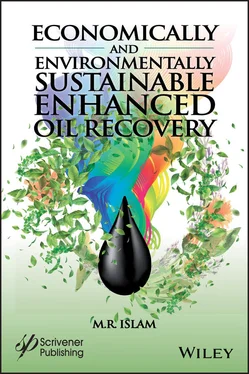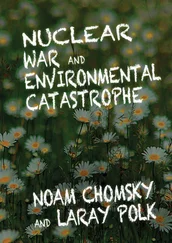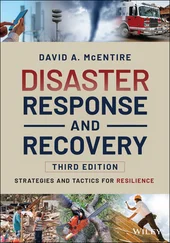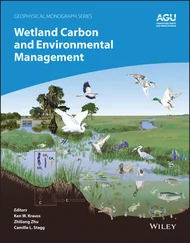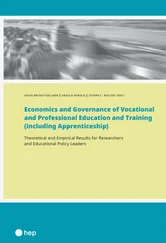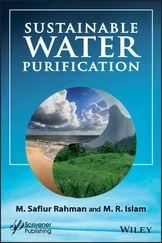Avicenna recommended arsenic with the gum of pine for asthma. He also prescribed arsenic in honey water, for a wide range of remedies, including for herpes esthiomenos of the nose (Aegineta, 1847). Avicenna discussed the use of white, red, and yellow arsenic, all being used in their natural state. It was much later that ‘refined’ arsenic emerged. For instance, arsenic was known as early as the fourth century B.C., when Aristotle referred to one of its sulfides as “sandarach,” or red lead (now known as As 4S 4). It was only in 1250 that Albertus Magnus, a German philosopher and alchemist that isolated the element. Of course, the word arsenic comes from the Persian word “zarnikh,” which means “yellow orpiment,” which the Greeks adopted as “arsenikon” . This is commonly denominated as Arsenic trisulfide (As 2S 3), although natural state contains other chemicals that are in perfect balance with the molecular form. Of course, the more common form is crystalline oxides, As 2O 3(white arsenic). The most common form, however, is the Arsenopyrite (FeAsS), an iron arsenic sulfide, also called mispickel.
Nowadays, the therapeutic use of As is making a comeback in modern medicine. Arsenic-trioxide, for instance, is used in treating patients with relapsed acute promyelocytic leukemia (APL). However, the notion of natural state of arsenic being different from synthetic one’s is absent.
Long before being hailed as “the arsenic that saved” in early 20 thcentury (Vahidnia et al ., 2007), Muslim scholars considered Arsenic sulphide as a chemical of crucial pharmaceutical value. The word arsenic is derived from the Persian zarnikh and Syriac zarniqa , later incorporated into ancient Greek as arsenikon , which meant “masculine” or “potent” and referred primarily to orpiment, or yellow arsenic. The word became arsenicum in Latin and arsenic in old French, from which the current English term is derived (Vahidnia et al ., 2007).
In post-Renaissance Europe, the use of arsenic as a poisoning agent became common. Its application in getting rid of wealthy people became so popular that by the 17th century France, white arsenic became known as poudre de succession , the ‘inheritance powder’ (Vahidnia et al ., 2007). In the 19 thcentury, the same tactic was used to commit insurance fraud. During that era, one of the most infamous case was that of Goeie Mie (‘Good Mary’) of Leiden, The Netherlands, who poisoned at least 102 friends and relatives between 1867 and 1884, distributing arsenic-trioxide (ATO) in hot milk to her victims after opening life insurance policies in their names. Of the 102 people poisoned, 45 persons became seriously ill, often with neurological symptoms and 27 persons died; 16 of whom were her own relatives (De Wolff and Edelbroek, 1994).
Research during that period led to the development of post-mortem detection of poison, followed by decrease in incidents of poisoning with arsenic. During the 19th century, European women applied arsenic powder to whiten their faces as well as to their hair and scalp to destroy vermin. It was also thought that arsenic consumption by women gave “beauty and freshness” to the skin. For the first time in Europe, medicinal applications of arsenic are found in late 18 thcentury, when various chronic disorders were being treated with arsenic (Bentley and Chasteen, 2002). Arsenic continued to be used in cosmetics well into the early twentieth century and this was a common source of accidental poisoning.
When arsenic is heated, it oxidizes and releases an odor similar to that of garlic. Striking various arsenic-containing minerals with a hammer might also release the characteristic odor. At ordinary pressure, arsenic, like carbon dioxide, does not melt but sublimes directly into vapor. Liquid arsenic only forms under high pressure.
Curiously, alchemists gave emphasis on characterizing material in terms of mercury and arsenic. Mercury, lead and arsenic are effective mitotic poisons (turbagens) at particular concentrations, due to their known affinity for thiol groups and induce various types of spindle disturbances. New Science classifies these clastogenic effects to be S-dependent. The availability of cations affect the number of aberrations produced quantitatively. Plants, following lower exposure, regain normalcy on being allowed to recover (Patra et al ., 2004). However, as usual New Science does not distinguish between natural arsenic and processed arsenic, thereby obscuring any usefulness of the research findings.
Historically, New Scientists 5have focused on medicinal effects of arsenic when it comes to finding any positive aspect of arsenic. Citations of medicinal applications range from Ancient China to Ancient Greece through Ancient India (Doyle, 2009). Hippocrates (469–377 BC) recommended arseniko as a tonic whilst Dioscorides (c. 54–68AD) recommended it for asthma. A Greek surgeon‐herbalist working in Nero’s army, he made extensive observations on asthma, including the use of realgar mixed with resin, inhaled as a smoke for the relief of cough or taken as a potion for asthma. Reportedly, it was used to kill Britanicus in 55 AD during the reign of Emperor Nero (37–68AD).
Egyptologists claim that ancient Egyptians used arsenic to harden copper at least 3000 years ago. This was confirmed by Islam et al . (2010), who reviewed ancient technologies and found them to be totally sustainable because they used no artificial mass or energy source. They also discussed the fact that such chemicals were added in the embalming fluid during processing of mummies. Of course, the Medieval Islamic golden era saw numerous applications through alchemy. However, the role of arsenic in material processing has drawn little attention from New Scientists. In Europe, during the New Science era, the use of arsenic is synonymous with processed derivatives of arsenic, rather than naturally occurring version. Graeme and Pollack (1998) described how artificial processing of arsenic can render both mercury and arsenic into toxic agents. They pointed out that Greeks and Romans continued to use natural arsenic throughout the Medieval era for various medical purposes. Even during the 1800s, arsenic remained in use for medical purposes in treating leukemia, psoriasis, and asthma. Of interest is the fact that the Fowler’s solution was not withdrawn from the US market until the 1950s. Meanwhile, Erlich and Bertheim produced nearly 1000 compounds of arsenic to be used in the treatment of syphilis; the use of such compounds was not curtailed until after the advent of penicillin in 1943. The arsenic-containing drug melarsoprol (Mel B) is still the drug of choice for treating African trypanosomiasis at the meningoencephalitic stage 1, 2, 3, 4. Note that commercial use of electricity began in 1870s. Although it is unknown among New scientists, the use of electricity for thermal alteration renders a process unsustainable. In the meantime, while natural penicillin was discovered in 1928 by Alexander Fleming, Professor of Bacteriology at St. Mary’s Hospital in London, mass production was possible only after synthetic version of penicillin was created. This transformation from natural penicillin to Benzylpenicillin (C 16H 18N 2O 4S) first took place in 1942 (Fischer and Ganellin, 2006). This transition from natural to artificial is symbolic of what has happened in sustainability considerations, natural being sustainable while artificial (or synthetic) being unsustainable.
Arsenic may occur in an inorganic or an organic form. The inorganic arsenic compounds include the arsenites, the arsenates, and elemental arsenic. The organic arsenic compounds include arsine and its organic derivatives. In modern era, synthetic or inorganic arsenic has been the only one used for commercial applications. In all these applications, arsenic is never in its natural form and all the byproducts are inherently toxic to the environment. For instance, arsenic is a byproduct of the smelting process for many metal ores such as, cobalt, gold, lead, nickel, and zinc. The natural form of arsenic was used in ancient and medieval era for similar applications. It seems even in modern Europe as late as 19 thcentury arsenic was used in paints and dyes for clothes, paper, and wallpaper (Meharg 2003). Even then, arsenic for the production of green pigments following the synthesis in the late eighteenth century of copper arsenite was in its toxic form. These pigments were widely used in wallpapers. In damp rooms, fungi living on the wallpaper paste turned the arsenic salts into highly toxic trimethylarsine. Arsenic pigments were responsible for untold numbers of cases of chronic illness and many deaths (Meharg, 2003).
Читать дальше
